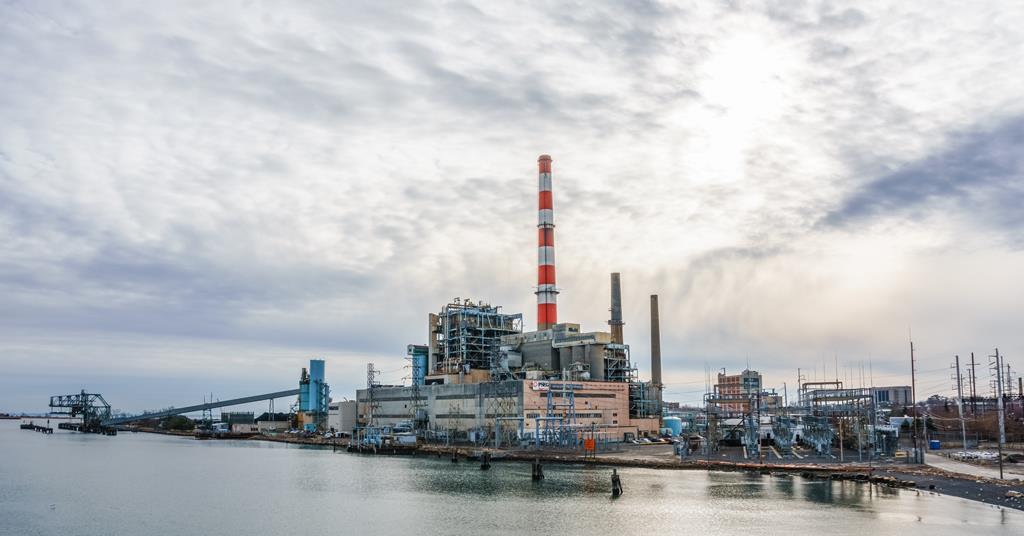
The US Environmental Protection Agency (EPA) has proposed new rules that would set carbon emissions standards for coal and gas-fired power plants under the US Clean Air Act. The agency estimates that this would avoid the emission of more than 600 million tonnes of carbon dioxide pollution by 2042. The proposed regulations would also result in cutting tens of thousands of tonnes of particulate matter, sulfur dioxide and nitrogen oxides, the EPA said.
The agency calculates the net climate and health benefits of these draft standards at up to $85 billion (£68 billion), and that its analysis determined that power companies can implement them with ‘a negligible impact on electricity prices’.
If enacted, the regulations will replace previous iterations put forward by the Obama and then Trump administrations. Finalised in August 2015, President Obama’s Clean Power Plan (CPP) set the US’s first-ever limits on carbon emissions from coal-fired power plants under the US Clean Air Act. But the Trump administration repealed the rule in June 2019, arguing the it exceeded the agency’s statutory authority and created unnecessary regulatory burdens.
Trump’s EPA replaced the CPP with its own Affordable Clean Energy (ACE) rule, which established emission guidelines for states to use when developing their strategies to limit carbon dioxide from coal power plants. But in 2021, a US appeals court overturned that rule and sent it back to the EPA, arguing that it ‘fundamentally’ misinterpreted the Clean Air Act, and that its amendment of the regulatory framework to slow the process for reduction of emissions is ‘arbitrary and capricious’.
‘By proposing new standards for fossil fuel-fired power plants, EPA is delivering on its mission to reduce harmful pollution that threatens people’s health and wellbeing,’ said EPA Administrator Michael Regan. ‘EPA’s proposal relies on proven, readily available technologies to limit carbon pollution and seizes the momentum already underway in the power sector to move toward a cleaner future,’ he added.
The EPA’s latest standards impose restrictions on the emissions at new and existing plant coal or gas-fired power plants. The EPA explains that it is proposing repealing the previous administration’s ACE rule because its emission guidelines ‘do not reflect the best system of emissions reduction’ for steam generating power stations and are ‘inconsistent’ with the Clean Air Act.
There was some pushback, however, on Capitol Hill. Senator Joe Manchin, a Democrat who chairs the Senate Energy and Natural Resources Committee, launched a blockade of President Joe Biden’s EPA nominees over the new emissions rules. ‘If the reports are true, the pending EPA proposal would impact nearly all fossil-fuelled power plants in the United States, which generate about 60% of our electricity, without an adequate plan to replace the lost baseload generation,’ Manchin stated. He threatened to oppose all the Biden administration’s EPA nominees.
But others were enthusiastic about the EPA’s action. ‘Rather than regulating the grid as one big machine, as the Clean Power Plan tried to do, the new rules stay inside the fenceline of individual power plants and use new control technologies to set greenhouse gas emissions standards for coal and gas plants,’ said William Boyd, a professor at the University of California Los Angeles’s law school and its Institute of the Environment and Sustainability. ‘Although these new rules are not as flexible as the Clean Power Plan, they fit squarely within EPA’s authority under the Clean Air Act to impose the best system of emissions reduction on new and existing sources of greenhouse gas emissions.’
Cara Horowitz, the executive director of UCLA law school’s climate and environment institute, called the proposal ‘a nicely synced strategy’, noting that Republican states and others will challenge this rule as soon as it is final. ‘But the Clean Air Act tells EPA to regulate climate pollution from dirty power plants, and the supreme court told EPA to do so using technology applied at the site of those plants,’ she added. ‘EPA’s proposal checks those boxes.’